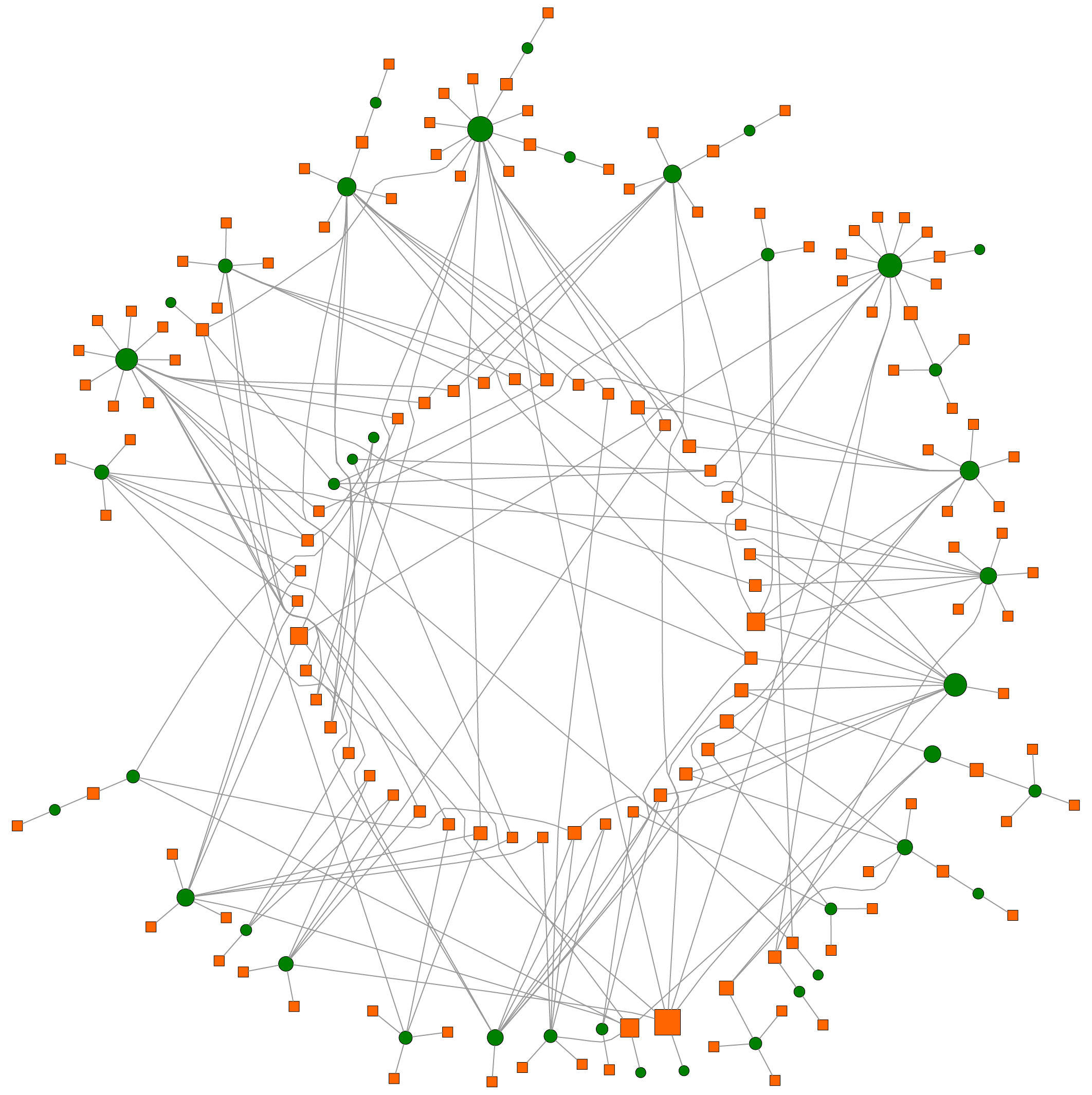A regional species pool consists of plant species (green circles) and pollinator species (orange squares). If two species interact when both are present in a community, they are connected by a gray edge.
With a focus on plant and pollinator species, Colin Campbell, associate professor of physics at the University of Mount Union, studies how these groups interact with one another. Some interactions are mutualistic, where both species benefit, but other interactions are only beneficial for one species. The net effect of many interactions can result in stable or unstable communities, which can be modeled as networks.
Calling on the Ohio Supercomputer Center (OSC) for computational assistance, Campbell wanted to investigate these unstable networks and how established communities are impacted by invasions of whole other communities of species.
The types of simulations that Campbell runs at OSC are critical to understanding how to manage ecological issues impacting plant-pollinator communities, such as colony collapse disorder, and are also relevant for issues that arise in other ecological communities, including microbes in the human gut.
“No community is really stable. There are always factors pushing a community; things like climate change or the unintentional transport of species across continents,” Campbell said. “In some cases, we observe a collapse of pollination services. One approach to restore or bolster crop pollination is to introduce new species to the community. However, predicting effective strategies where the new species don’t immediately die out or negatively affect the rest of the community can be challenging. Computational modeling is particularly appealing in this situation because it’s hard to do empirical experiments that are well controlled.”
Campbell is part of a team that runs simulations that model what would happen if a random collection of species invaded a population, as well as what would happen if a controlled set of species were introduced. Understanding how native species react to different types of invasions reveals what can be done to help ensure more stable communities long term.
“It’s nothing that I could run in any reasonable period of time on just a local desktop, or even a powerful local server,” Campbell said. “You really need to have some high-powered computational firepower to do this.”
Campbell noted that these intensive simulations would be hard to manage among other daily tasks without the help of OSC and its short wait times.
“If I’m able to write a script, submit it to the supercomputer center, come back an hour later and I’m still in that headspace and I have the results from that analysis – you can’t really put a price on that.”
